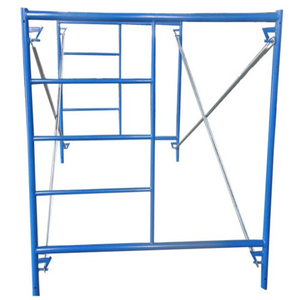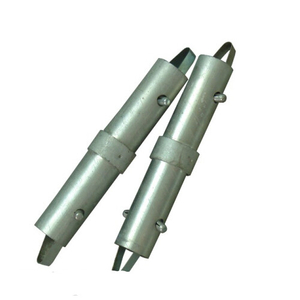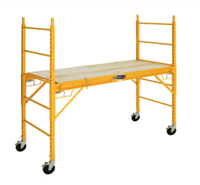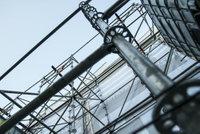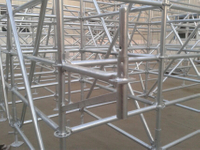Frame scaffolding is often an essential part of construction and home maintenance, but negligence of falsework can lead to serious accidents. So how do we install scaffolding to keep ourselves safe?
What should I know about the assembly of frame scaffolding?
What should I do when assembling frame scaffolding?
What should I know when I remove the scaffolding?
Conclusion
What should I know about the assembly of scaffolding?
Make sure you have the proper training to set up the scaffolding.
Check location:
Ground condition
Overhead wire
Obstacle
Surface elevation change
Collocation problem
Inspect the frame, bracket and all other parts for damage, bending and excessive rust or wear.
Use seat belts tied to scaffolding, buildings or lifelines. For more information, see OSH Answers Seat Belts, Seat Belts and Lanyards.
Assemble the scaffolding with another person so that one person is on the frame scaffolding and one person transfers material from the ground.
Check the verticality and alignment of all scaffolding components.
Remove debris and mud from the installation area and level the ground before placing the segmented legs.
Install the segmented legs on a stable, solid base. Use mud when the scaffolding is erected on the soil.
Use a suitable mud threshold of 50 x 250 mm (for example, 2 x 10 ft boards) continuous under at least two support feet. Where possible, the sill should be at least 600 mm (2 ft) above the foot of thefalsework.
The base plate is nailed or screwed onto the mud.
Use a jackscrew to eliminate the risk of temporarily lifting the scaffolding to add a shim when partially or unevenly.
Always check the locking device.
Make sure all parts of the first level are horizontal and square.
Install the ladder as the erection proceeds. When the frame scaffolding is in place for a long time, install the stairs. The ladder must extend 1 m (3 ft) above the platform and securely attached to the stage.
Secure all brackets and guard rails securely. Make sure that all cross braces fit and lock on each post in each section.
Install all the guardrails required: top, middle and toe. Requirements will vary depending on the materials used and the laws that apply to your area.
Check the board before use. Check the weight that the board must carry, including the weight of the crew, tools and materials.
The platform is completely completed at each level of work before the next level is assembled.
Secure the falsework to adjacent building structures in accordance with the regulations applicable to your area.
All equipment is assembled according to the manufacturer's specifications or engineer's design.
What should I do when assembling frame scaffolding?
Do not mix frames and parts from different manufacturers.
Do not use nails or other equipment to replace the appropriate fixing parts recommended by the manufacturer.
Do not replace concrete mud pedestals, plates and jackscrews with concrete blocks, bricks or scrap.
Do not over-expand the jackscrews.
Do not use ladders or temporary devices on top of the scaffolding to increase the height.
Do not use the same board as the platform base.
Do not wear inappropriate braces.
Do not use cross braces as guard rails.
Do not use the falsework frame to climb the work platform.
Wooden guardrail (fixed to the frame)
What should I know when I remove the scaffolding?
Make sure the structure is always stable.
A platform that removes all materials and debris before dismantling.
In the reverse order of installation.
Completely remove each layer before starting the bottom.
Work from the full platform deck while removing the brackets and frame.
Carefully remove the jammed or rusted parts. Pulling or pulling a stuck part usually leads to loss of balance. Put on a seat belt and a lanyard.
Do not throw or drop boards or parts from height.
Inspect and maintain all frame scaffolding components. Repair or discard all damaged parts immediately.
Lubricate the moving parts of all accessories.
Conclusion
Learn to set up falsework correctly to ensure that you and anyone using the device remain safe. If you want to buy safe, durable, high quality and reasonably priced frame scaffolding, Nanjing Tuopeng Construction Technology can provide you with the perfect product.









